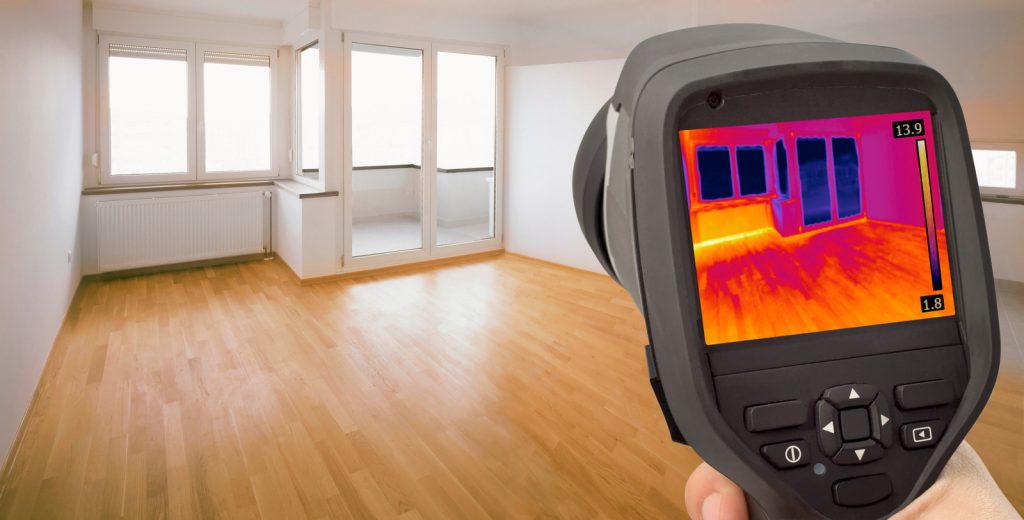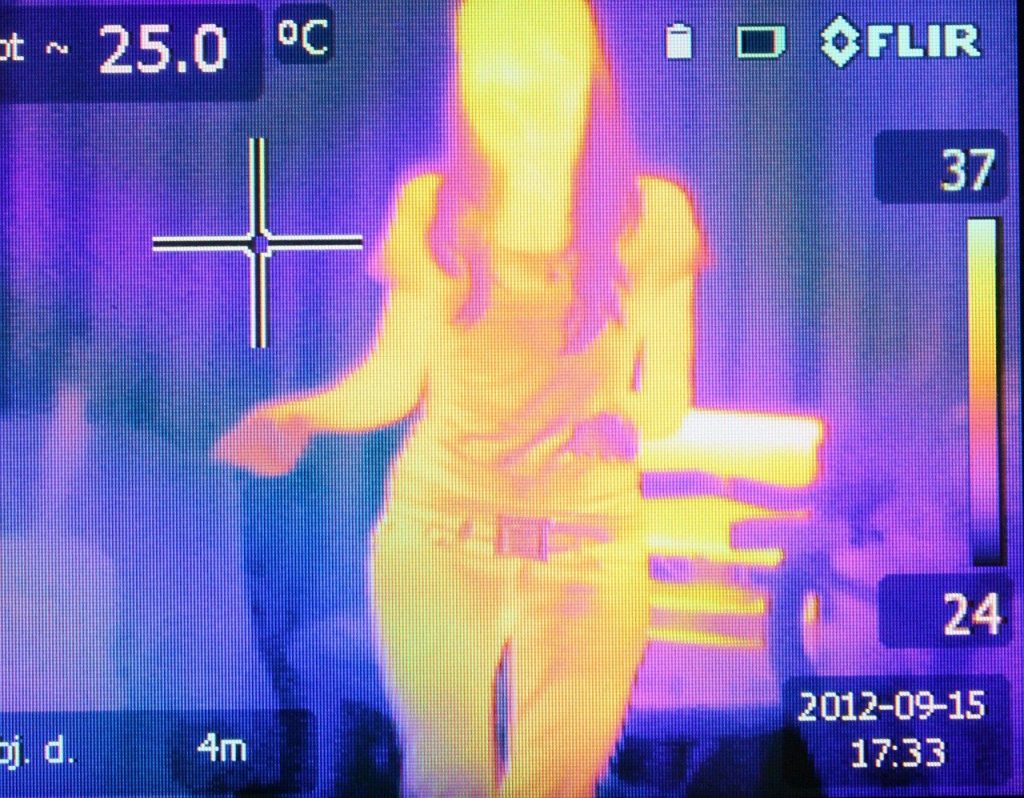What is a thermal imaging camera and how does it work?
A thermal imaging camera is a handheld device that converts infrared energy picked up from objects radiating heat into a visual colour image on a screen. It does this without having to make direct contact with the source but when aimed towards it, detects the surface temperature being emitted. The image can then be saved and shared.

The heat sensor on the camera allows heating engineers to see areas where the pipes are running in a heating system, where heat is being lost, is the underfloor heating working properly, which component or equipment is overheating, are if there any leaks or cold spots in pipes under floors or even if there is sludge in the radiators etc
Warm or hot areas show up on the display as yellow, orange or red on a thermal imaging camera and cooler regions are usually blue or purple. Green colours indicate normal room temperature. Many cameras will also be able to take a normal image from visible light to help identify where the thermal image was taken at.
Benefits of Thermal Imaging Cameras for Heating Engineers
A thermal imaging camera:
- Locates heating pipes in floors and walls
- Checks heat distribution within a radiator
- Checks if heating pipes are correctly labelled
- Finds leaks before they need major repairs
- Checks the routing of heating cables
- Avoids errors when drilling into floors and walls so you don’t damage pipes
- Detects damp patches in rooms and ceilings
- Checks the condition of insulations in the property
- Shows customers your findings to prove where work is needed
- Finds sources of drafts
Thermal imaging cameras for plumbing and heating engineers
Heating engineers need a camera with a wide temperature range: anywhere between -40⁰C to 1000⁰C, and need it to be of high accuracy such as ±2⁰C. Because it can be used to check radiators and underfloor heating, to see clearly it also needs to have a fairly wide angle visual display around 3.2″ as a minimum.
Although the Infrared sensor resolution doesn’t need to be very high, it will still require something like 160×120 to give detailed thermal images. Data transfer capability is also a requirement for the heating engineer to be able to show the customer your findings which show transparency and gain their confidence. This can be shared via Bluetooth, WhatsApp or email.
How far can thermal cameras see?
This depends on the image resolution of the camera, the number of pixels and the focal lens on the camera – its length and field of view. For domestic heating engineers, the objects being measured are likely to be within 10 metres distance and most thermal imaging cameras on the market will work, having differences only in level of detail.
Best Thermal imaging cameras for heating engineers
The following thermal cameras have been chosen (links to Amazon) because they suit a heating engineer’s needs very well in terms of temperature range, battery life, resolution, field of view and focus.
Bosch Professional 12V System Thermal Camera GTC 400 C
Testo 868 – Thermal Imaging Camera (w/o BT) (with Wi-Fi connection)
Do thermal cameras need calibration?
Unlike a Flue Gas Analyser, thermal cameras don’t need calibration from a regulations point of view and wouldn’t really be necessary for gas and heating engineers generally. But manufacturers recommend it is calibrated annually to check the temperature sensors are in range and that firmware is up to date.
Why is thermal imaging of a house important?
Engineers can use thermal imaging cameras to analyse the amount of heat a building accumulates or loses. By using a thermal camera, you can determine which areas of a house require work to fix, or where it’s necessary to stop heat being lost.
This could be from windows where a central heating engineer can only direct the customer’s attention towards. For example, a customer might say a particular room is always cold. A thermal camera can confirm visually for them that a radiator is working correctly but heat is being lost through the window or gaps under the doors.
Are thermal cameras dangerous?
As thermal imaging cameras are non contact and passive measuring instruments that only measure heat being emitted, they are not dangerous even when aimed at living things. However, they should not be used for taking a person’s body temperature reading because they normally have a measurement accuracy of ±2⁰C which is not accurate enough

Can some metals block thermal cameras?
Thermal cameras don’t see through metals but pick up heat differentials on the meter surface and provide a visual image of the heat radiated through the pipes. Most cameras are sensitive to ±3⁰C so it can easily pick up temperature differences between flow and return pipes on a central heating system for example
Can you see through walls with a thermal camera?
No, thermal cameras cannot see through external walls because of their thickness and insulation material within them that aim to prevent the heat escaping. Thermal cameras detect heat to produce images and this can’t be done through thick walls. But if the wall is thin, such as plasterboard and doesn’t have insulation, the heat signatures can be detected
Summary
A thermal camera has many applications for heating engineers including for air conditioning, electricity, energy auditing, window installations, drywalling. You can save time and stress by using it to check for any leaking fittings or floor heating pipes, where do the heating pipes run in the wall or floor, the condition of insulation or where the draft is coming from.
*The information in this article should be used for general guidance only and not as financial advice. Full details are on the link in the footer to our disclaimer page. Always discuss your requirements with a competent and suitably qualified professional before undertaking any work.
Affiliate disclosure
Heatology.co are participants in a variety of affiliate schemes which help fund and run this website, visitors who follow our links and purchase a product may earn Heatology.co a commission. The money we make from affiliate marketing costs you nothing but keeps us online, so thank you for your continued support!
